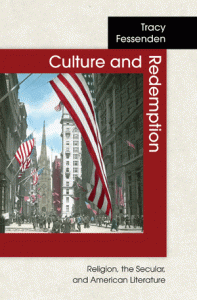While reading Pierre Bourdieu’s Invitation to Reflexive Sociology (1992), I came across the following gem:
“Paradoxically, historians often condemn themselves to anachronism because of their ahistorical, or dehistoricized, usage of the concepts they employ to think the societies of the past. They forget that these concepts and that the reality they capture are themselves the product of a historical construction: the very history to which they apply these concepts has in fact invented, created them, oftentimes at the cost of an immense–and largely forgotten–historical work” (1).
It’s probably a sign that I need to take a break from comping, but I couldn’t help but cheer when I found this passage. It’s particularly helpful to me as I continue to reflect on the categories employed by those in my discipline when they study the history of American religion. One of the best examples of this awareness, of this self-reflexivity, is Tracy Fessenden’s Culture and Redemption: Religion, the Secular, and American Literature (2007). Fessenden’s work comes at a historiographic moment in which the contradictory and exclusionary nature of the American religious establishment is well understood. Though quite different in many ways, I’m reminded of David Sehat’s Myth of American Religious Freedom (2011) and his complicated portrayal of just what religious freedom “meant” in the broad swath of American history.
Fessenden’s work comes at a historiographic moment in which the contradictory and exclusionary nature of the American religious establishment is well understood. Though quite different in many ways, I’m reminded of David Sehat’s Myth of American Religious Freedom (2011) and his complicated portrayal of just what religious freedom “meant” in the broad swath of American history.
One of the most profitable arenas, as evidenced by Fessenden’s own work, has been examining the role played by American Catholicism in contesting the categories “religion” and “secular” in American history. Works like Philip Hamburger’s Separation of Church and State (2002), Elizabeth Fenton’s Religious Liberties: Anti-Catholicism and Liberal Democracy in Nineteenth-Century U.S. Literature and Culture (2011) and John Lardas Modern’s Secularism in Antebellum America (2011) have all testified to the tricky business of historicizing the religion/secular binary (as well as the idea that it is a binary!) by paying careful attention to the way in which mundane aspects of social life are classified as otherwise.
As I read Fessenden, she is interested in how some American Protestants have been able to represent themselves and their ideas with comparative ease, and what this might mean for the history of American culture. Specifically, what might this have meant for other American groups who wished to define themselves in relation to the “religious” in American life? John Modern, in his own recent account of secularism, picks up on just this idea. “The truth of religion,” Modern writes, “was consolidated within the Protestant public sphere” (2). Tracing the implications of these insights for the history of American religion will be a fruitful line of scholarship that I look forward to reading (and writing).
(1) Bourdieu, 94.
(2) Modern, 284.
Leave a Reply